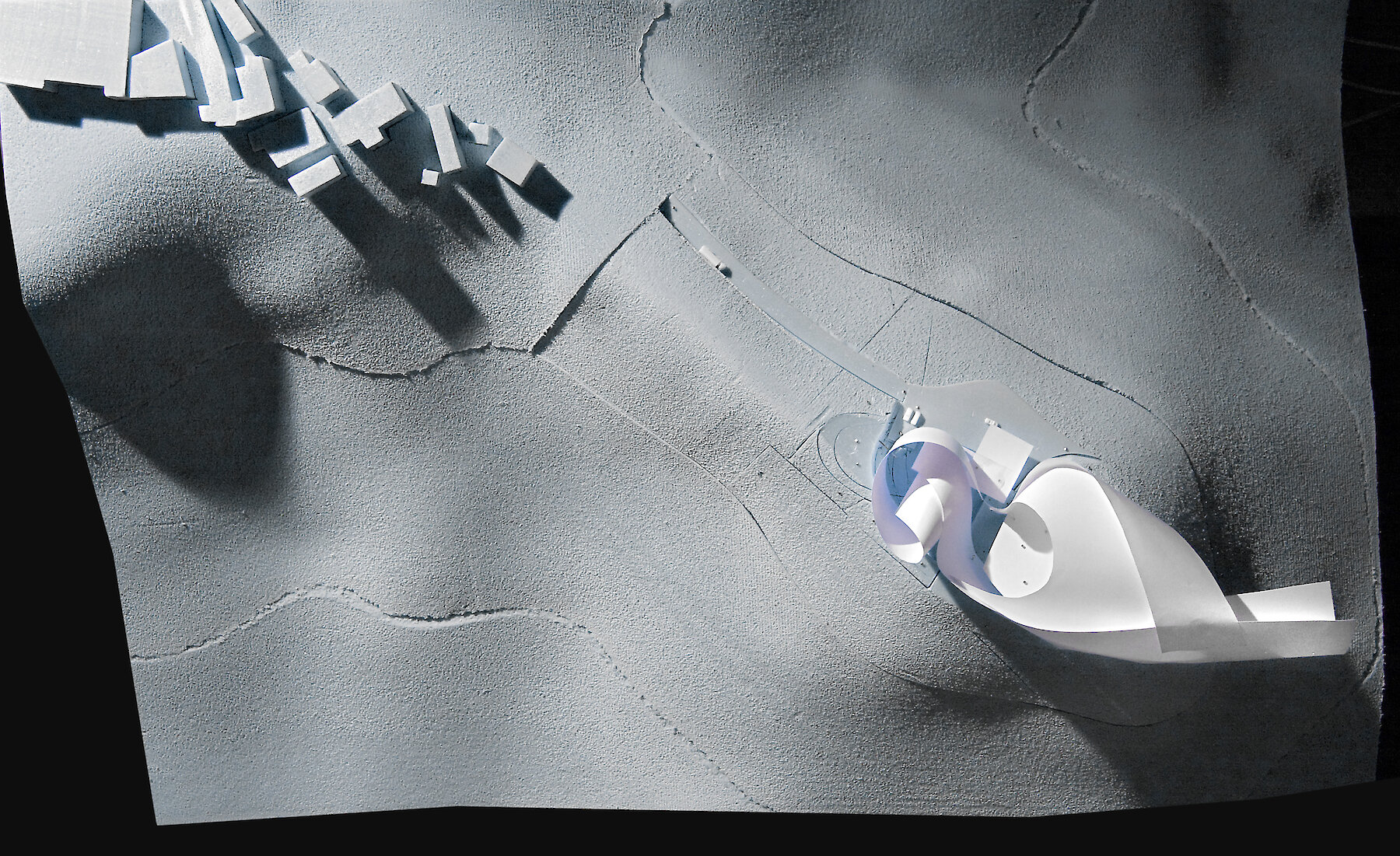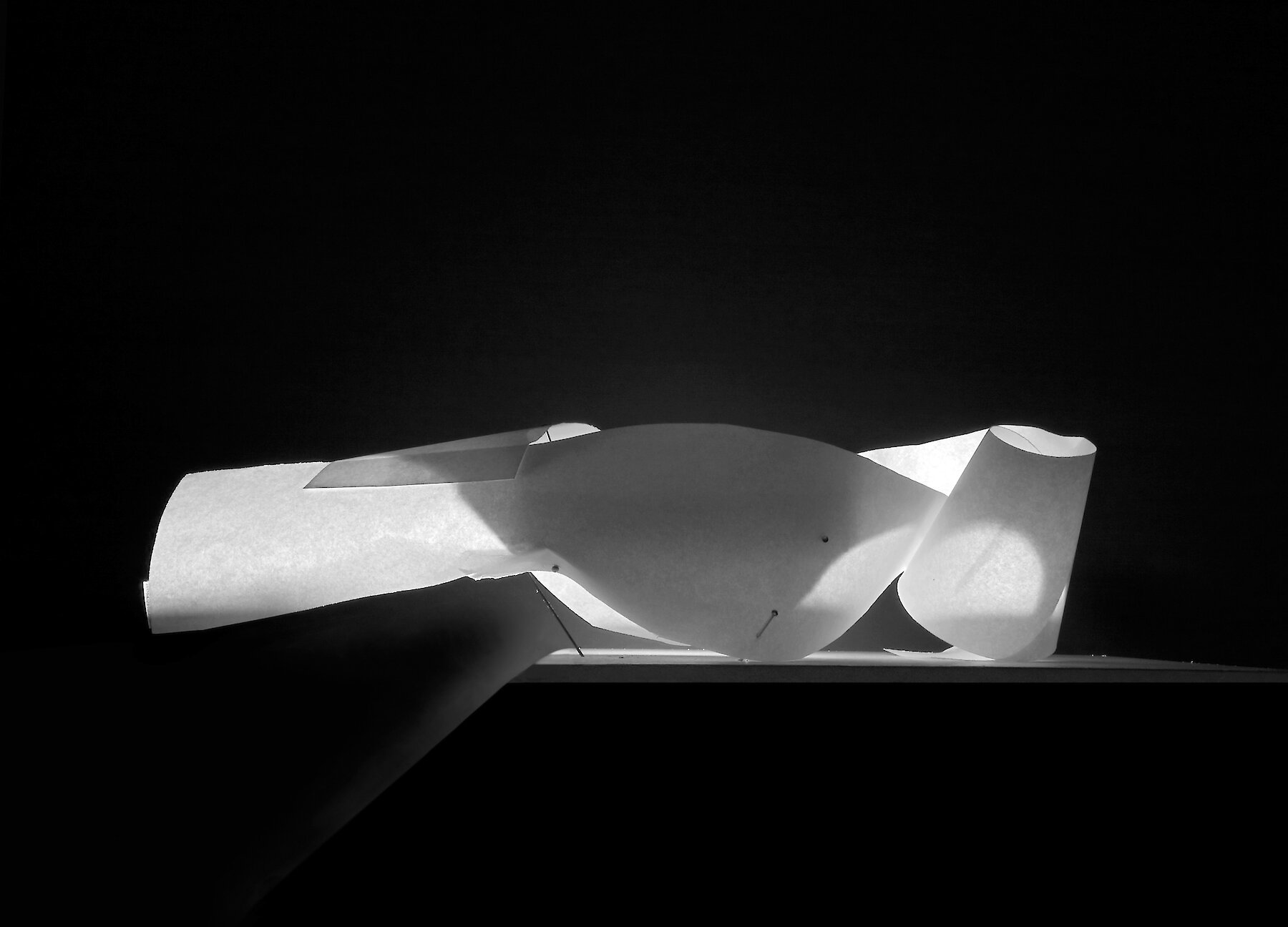Art Museum Strongoli
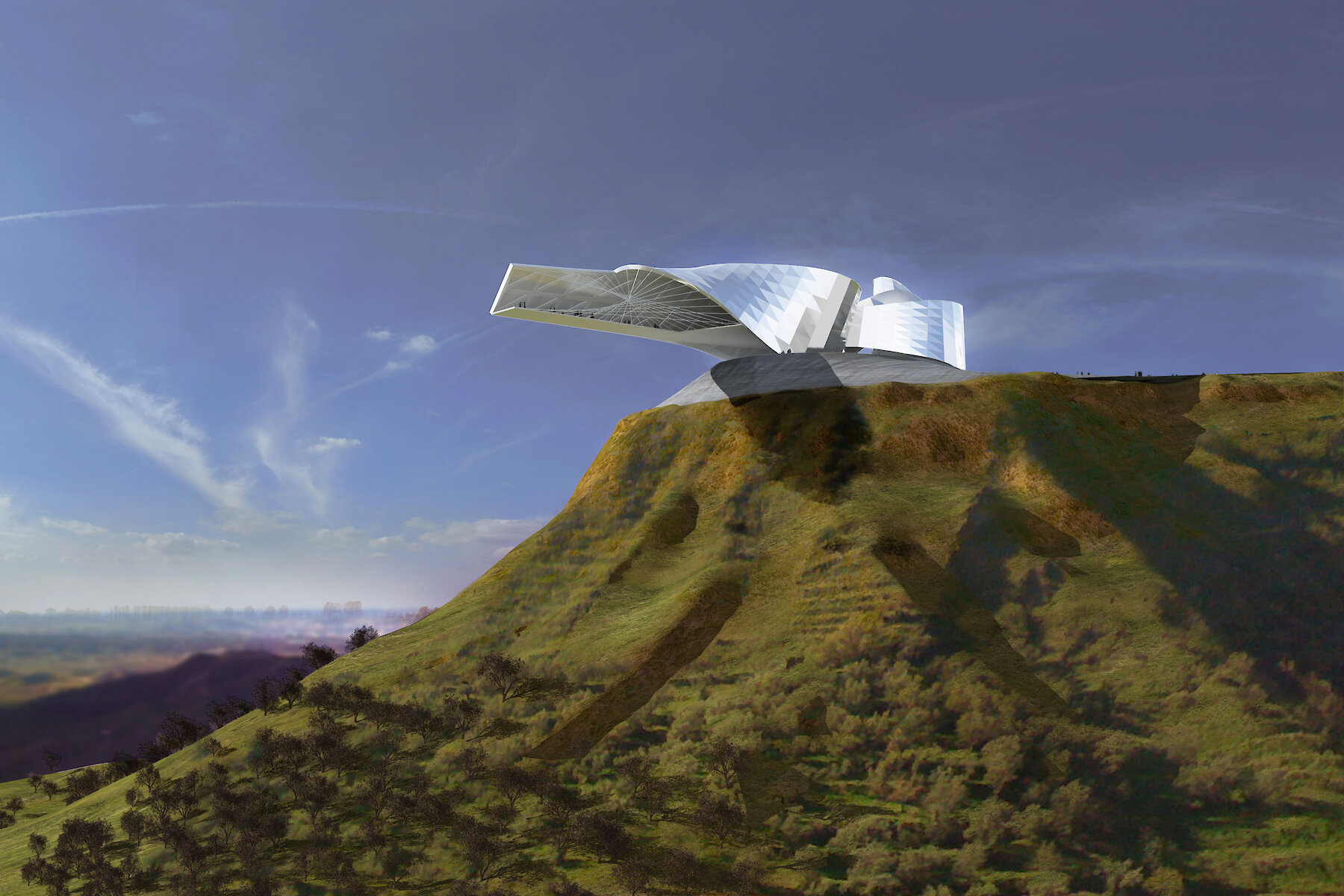
Visible from far away on top of the Motta Grande, a hill just outside of Strongoli, the new Art Museum Strongoli creates a remarkable landmark in the heart of Calabria.
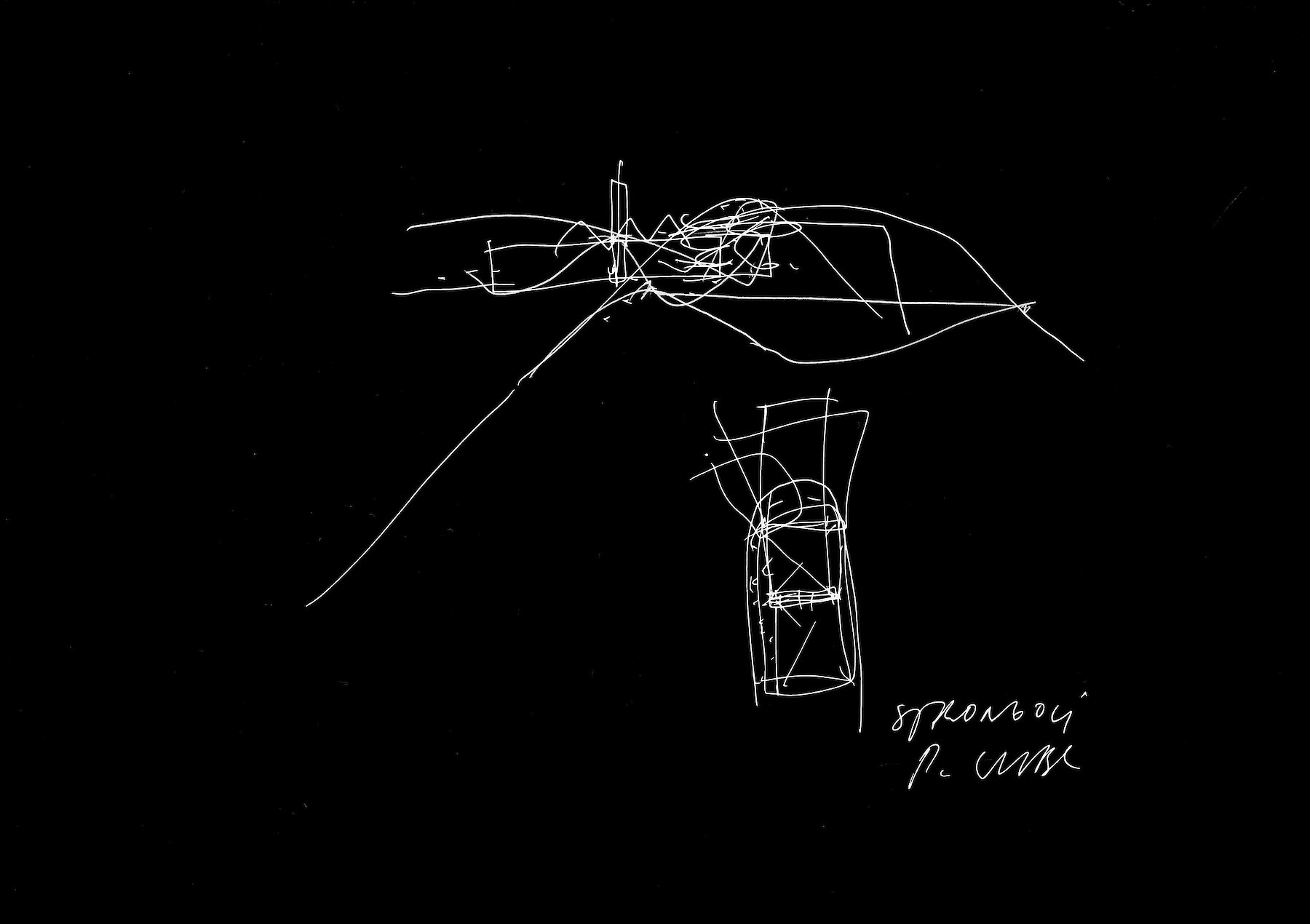
Sketch by Wolf dPrix
- Location
- Strongoli, Italy
- Start of planning
- 2014
- Gross floor area
- 6 000 m²
Project info
The hybrid form of the building results from the connection of three functional bodies: an iconic, cone-shaped structure serving as public entrance, the main volume of a multifunctional hall, housing the exhibitions, and a daringly cantilevering panoramic restaurant. This sculptural merging of forms is enveloped by a curved outer skin designed according to energy transforming parameters driven by wind and sun. The aim of our proposal is to design a building that generates more energy than the building itself is using.
Program
The public entrance in the cone-shaped foyer area is oriented toward the city. Its spiralling ramp, giving access to the exhibition zone, makes it a spectacular event space. At the other end of the building, the restaurant’s panoramic terrace offers a great view to the eastern sea and the surrounding landscape. Between these two points, the visitors’ route loops through the flexible, two-story exhibition area. Regular exhibitions take place on the upper level, while contemporary media art is exhibited in the “VideoLab” below. Both spaces are directly accessible by two elevators from the service area on the groundfloor, which also houses the administrative spaces exposed to natural light from the downhill side. The multifunctional hall can also be used as a lecture hall, auditorium, cinema, or just as an extension of the foyer for public events. The new Art Museum Strongoli is therefore not only a place to experience art, but also of cultural exchange, with the potential to become one of the hippest destinations in southern Italy.
Structural Description
The cantilevered part of the Art Museum Strongoli consists mainly of two connected ribbons. It has been proposed to build them as steel frameworks. While the slightly tilted ribbon mostly carries the vertical loads, the curved one horizontally stabilizes the latter at the upper edge. The lower edge is stabilized by the terrace’s slab rigidly connected to the cantilevering ribbon. For additional strength and to carry vertical loads of the terrace, ropes are arrayed between the steel construction of the curved ribbon and the terrace. The steel structure is connected to the reinforced concrete walls of the backside of the building and is founded on piles to produce the fixed support and load transfer into the ground.
Environmental, Energy and Building Services Concept
The exhibition spaces are physically separated from the loosely controlled macroclimate of the circulation and lobby spaces so that these act as a buffer zone between the exterior and the exhibition spaces, in which constant temperatures and in particular constant humidity levels are necessary to protect the exhibits. These are of hygroscopic nature in most cases, thus prone to damage on account of changing levels in relative humidity. The multifunctional outer skin acts as an environmental filter (light, heat) and as an active energy generation system (photovoltaic cells, solar thermal collectors).
The multilayered roof construction is designed to control natural daylighting of the exhibition spaces. It includes a layer of automatic louvers and a matt glass lower layer. This highly efficient system drastically reduces the electrical energy required for artificial lighting as well as the cooling energy associated with lighting, as the relationship between light output and heat gain associated with daylight is far more efficient than that associated with artificial light sources. The exhibition spaces are conditioned by an all-air VAV-system. People are a major contributor to the room cooling needs and also determine the amount of fresh air to be provided. Supply air is ducted from air handling units located in the vicinity of the exhibition spaces. Return air flows via the light fittings from the exhibition spaces, thus removing a large proportion of the heat from the lighting before it becomes a load on the space.
Combined heat and power generators fuelled by biomass provide the building with both heat and electrical power. This solution has both ecological and economic advantages compared to more conventional alternatives (c. 60% less CO2 emissions), but also provides a major advantage with regard to security of supply, which for the intended building use is not to be underestimated. The heat is primarily used to drive an absorption chiller used to cool the supply air in the central air handling plants.
Project insights
On the map
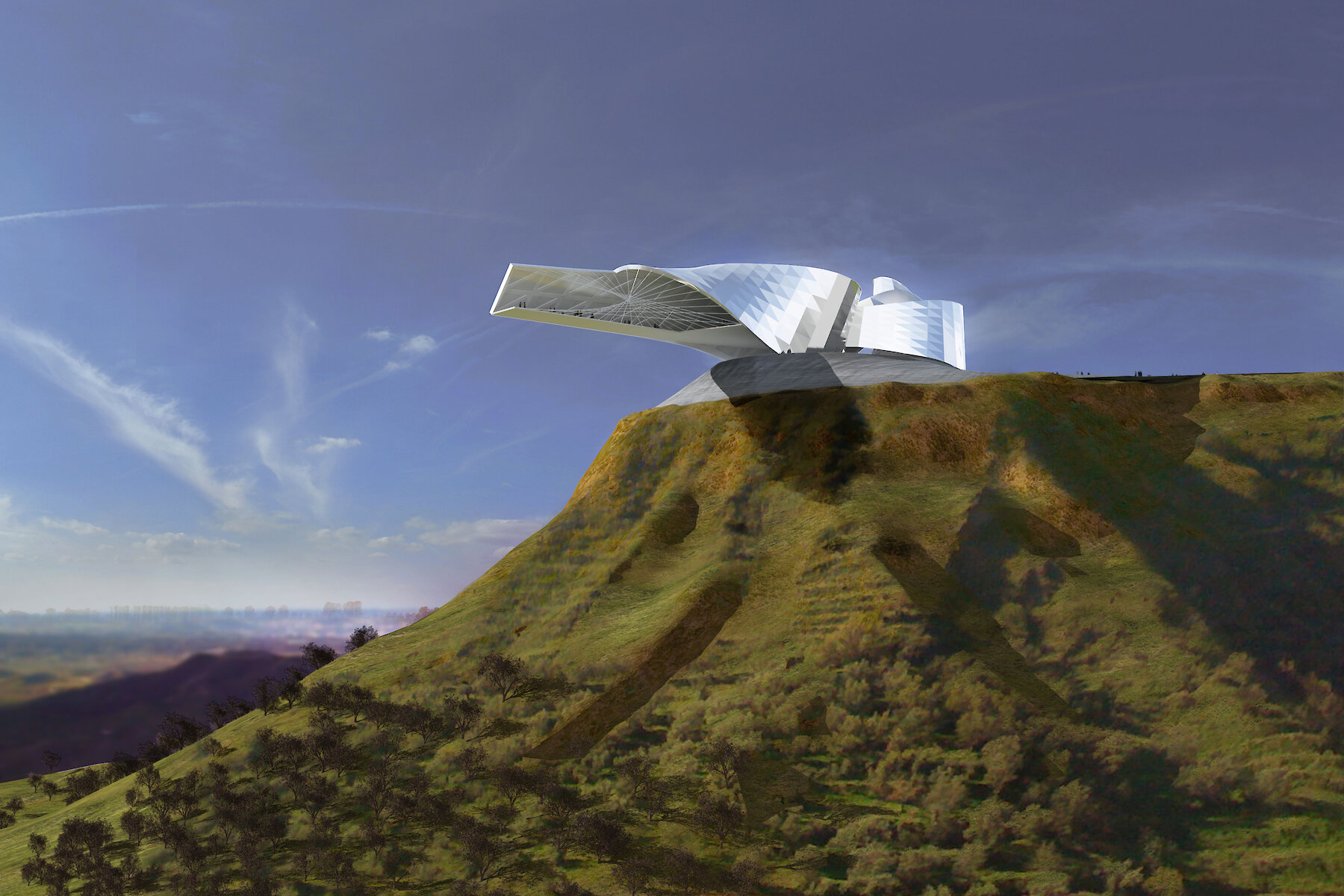
Armin Hess / isochrom.com
Related projects
Musée des Confluences
Lyon, France
2001/2010–2014


Museum of Contemporary Art & Planning Exhibition (MOCAPE)
Shenzhen, China
2007–2016


